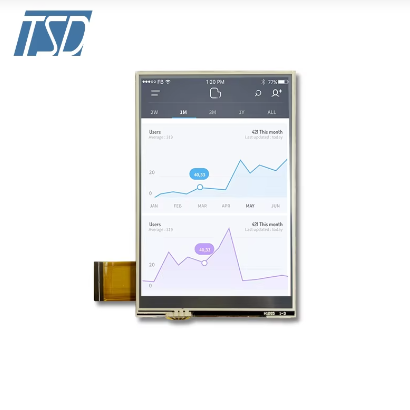High Contrast and Brightness for Medical Imaging
Importance of High Contrast Ratio in Diagnostic Accuracy
High contrast ratios matter a lot in medical imaging because they really do help see those tiny details during exams. Research shows that monitors with around 1000:1 contrast ratio tend to catch problems better than lower ones when doing various imaging tests. When doctors can tell apart different shades of gray on screen, it makes all the difference for getting right diagnoses and avoiding mistakes. We've seen this play out in practice too. Take ultrasound scans for instance, or MRIs and X-rays where small changes might indicate bigger issues. Clear images just make everything easier for healthcare professionals trying to figure out what's going on inside patients' bodies.
Optimal Brightness Levels for Varied Lighting Conditions
Getting the right brightness settings matters a lot when it comes to making sure medical displays stay visible no matter what kind of lighting they're exposed to in hospitals and clinics. Most monitors need to hit around 500 cd per square meter under normal room lighting conditions so doctors don't get eye fatigue during long checkups. There are actually industry standards out there that push for automatic brightness adjustments depending on how bright the surrounding area gets. These kinds of smart displays help keep images clear even when lights change throughout the day. We've seen this work particularly well in places like surgery suites where overhead lights go on and off constantly, and in ERs where emergency lighting might kick in at any moment.
Color Accuracy and Grayscale Performance
Getting colors right matters a lot in medical imaging because it helps doctors tell different tissues and problems apart when looking at scans. Medical displays must meet certain color standards like sRGB to work properly in clinics and hospitals. Research shows better grayscale quality makes a big difference for diagnosis, especially important in things like ultrasounds and MRIs where small changes matter. When colors are displayed accurately on screens, doctors can spot those tiny details that might otherwise get missed. This attention to detail isn't just nice to have it's essential for making correct diagnoses based on what they see on screen during patient evaluations.
Durability in Sterile Environments
Resistance to Chemical Cleaners and Disinfectants
The screens used in hospitals get hit with pretty aggressive cleaning chemicals all the time, so they need materials that stand up to these harsh cleaners without breaking down. Hospitals just cant risk anything when it comes to keeping things clean and preventing infections. Studies indicate that displays with special protective coatings actually hold up against most hospital grade disinfectants without losing their picture quality or touch response. The right coating makes all the difference in how long these expensive screens last before needing replacement after constant scrubbing sessions. Following proper cleaning guidelines helps keep equipment running smoothly for years instead of months, which matters a lot since nobody wants to replace critical display systems during an outbreak situation when budgets are already stretched thin.
Robust Construction for High-Traffic Medical Settings
Medical monitors in active hospital environments need to take a lot of punishment day after day. Those placed in ERs or waiting rooms especially should have tough outer shells that can handle accidental bumps and constant handling without cracking or breaking down. Real world experience shows these sturdier builds last much longer than cheaper alternatives when put through their paces in demanding clinical spaces. The money saved over time is considerable too. Hospitals that spend extra upfront on solid construction materials typically see far fewer replacements needed across years of operation. Stronger medical displays pay for themselves many times over by cutting replacement expenses and keeping critical equipment running smoothly without unexpected breakdowns disrupting patient care.
Compliance with Medical Device Regulations
Meeting FDA and ISO Standards for Display Performance
Medical displays used in patient care need to follow FDA and ISO guidelines if they're going to work safely. These regulations outline what kind of performance levels displays should hit before they can actually function properly in hospitals and clinics. Getting certified isn't just paperwork either it means putting displays through strict tests that check things like whether they last long enough, show images clearly enough, and respond accurately when touched. All three aspects matter because together they decide if the screen works right during actual medical situations. When companies get these certifications sorted out, it does two main things makes sure the equipment is good enough for real healthcare use while building up confidence with doctors and nurses who will rely on them daily. For manufacturers trying to break into this field, having proper certifications basically becomes table stakes nowadays.
Electromagnetic Compatibility (EMC) Requirements
Medical displays need to follow strict EMC guidelines to prevent interference between devices and keep patients safe. The thing is, electronic equipment can mess with imaging results, making it harder for doctors to give proper diagnoses. Before they hit the market, displays go through various tests and have to pass certain regulatory benchmarks for EMC compliance. Basically, this means stopping displays from giving off electromagnetic signals that might interfere with nearby medical gear. Take MRI machines or ultrasound equipment for instance these diagnostic tools get disrupted if there's too much electromagnetic noise around them. That's why manufacturers really need to stick to these rules when producing medical displays. After all, nobody wants their life-saving technology compromised by something as simple as poor electromagnetic shielding in hospital environments.
Integration with Medical Systems and Interfaces
Compatibility with Medical Imaging Software
Getting displays to work well with current medical imaging software matters a lot when trying to fit them into hospitals and clinics. When equipment plays nice together, doctors and nurses spend less time fighting with technology and more time actually helping patients. Quick access to X-rays, MRIs, and other scans makes all the difference during emergencies or routine checkups. Most manufacturers go through certification processes such as DICOM standards to show their screens talk properly with hospital imaging systems. These standards aren't just paperwork either they make daily operations smoother for everyone involved. Radiologists especially appreciate this because it means fewer headaches when reviewing critical images that need immediate attention.
Touchscreen Functionality and Hygiene Considerations
Medical facilities are turning to touchscreen displays more and more because they're just easier to work with, especially when doctors need quick access to patient info during consultations. But there's a big problem nobody wants to talk about: germs. The screens get touched all day long by hands that haven't always been washed properly. That's why hospitals need touchscreens that wipe down easily and don't let bacteria stick around. Some recent research points to something interesting - screens treated with antimicrobial coatings actually make patients feel safer and more comfortable during their visits. We've seen hospitals report fewer infections after installing these special surfaces. For places like operating rooms or emergency departments where cleanliness is absolutely critical, these抗菌 (antimicrobial) surfaces aren't just nice to have anymore, they're becoming standard equipment.
Future Trends in Medical Display Technology
Advancements in Energy-Efficient TFT LCD Panels
Getting better at saving power has become really important for new developments in TFT LCD panels, especially since hospitals want to cut down on their electricity bills. Most recent improvements include things like LED backlights and smarter pixel arrangements that cut power needs without making the screens look worse. The environmental benefits are clear too when we talk about these medical displays. Looking at actual data from clinics across the country shows that switching to these efficient screens can save thousands each year something that matters a lot for places operating on tight budgets. For hospital administrators watching every dollar spent, investing in energy efficient tech means keeping costs down while still providing doctors with top quality imaging equipment for patient care.
Emerging Technologies Impacting Medical Displays
New developments in display technology, including OLED screens and UltraHD formats, are changing how doctors see inside patients' bodies with much greater detail than ever before. When hospitals adopt these newer screens, radiologists get sharper images of X-rays and MRIs, which helps them spot problems earlier and make better decisions about treatment options. Research from leading medical institutions shows that recent improvements in scanning equipment work hand in hand with these advanced displays to produce images so clear they almost look like photographs. This matters a lot for companies making medical equipment because if they don't keep up with these tech advances, their products might become obsolete faster than expected. The healthcare sector is moving quickly toward higher resolution imaging solutions, and those who fail to adapt risk falling behind competitors who already offer superior visualization tools to clinics and hospitals across the country.
FAQ
What is the benefit of a high contrast ratio in medical imaging?
A high contrast ratio significantly enhances the visibility of fine details in medical images, allowing clinicians to differentiate between similar shades of gray, which is essential for accurate diagnosis and reduces the risk of misinterpretation.
Why is adaptive brightness important for medical displays?
Adaptive brightness is important because it ensures that medical displays remain visible in varied lighting conditions, protecting physicians' eyes from strain and maintaining image clarity for accurate diagnostics.
How do coatings on medical displays help in sterile environments?
Coatings on medical displays help by resisting damage from chemical cleaners, maintaining performance despite exposure to disinfectants, and ensuring sterility and longevity of the display in healthcare settings.
Why must medical displays comply with FDA and ISO standards?
Compliance with FDA and ISO standards is crucial because it ensures safe use in patient care, indicating that the display meets performance criteria suitable for healthcare settings and strengthens trust in its use.
What emerging technologies are impacting medical display efficiency?
Emerging technologies like OLED and UltraHD displays, along with energy-efficient TFT LCD panels, are transforming medical imaging by offering improved clarity, precision, and reduced energy consumption, enhancing display quality and operational cost efficiency.
Table of Contents
- High Contrast and Brightness for Medical Imaging
- Durability in Sterile Environments
- Compliance with Medical Device Regulations
- Integration with Medical Systems and Interfaces
- Future Trends in Medical Display Technology
-
FAQ
- What is the benefit of a high contrast ratio in medical imaging?
- Why is adaptive brightness important for medical displays?
- How do coatings on medical displays help in sterile environments?
- Why must medical displays comply with FDA and ISO standards?
- What emerging technologies are impacting medical display efficiency?




